Way of working
Our Design and Develop Process is a mix of Google Design Sprint and Design Thinking and Lean Startup. We growth hacking new innovation into companies.
Our Design and Develop Process is a mix of Google Design Sprint and Design Thinking and Lean Startup. We growth hacking new innovation into companies.
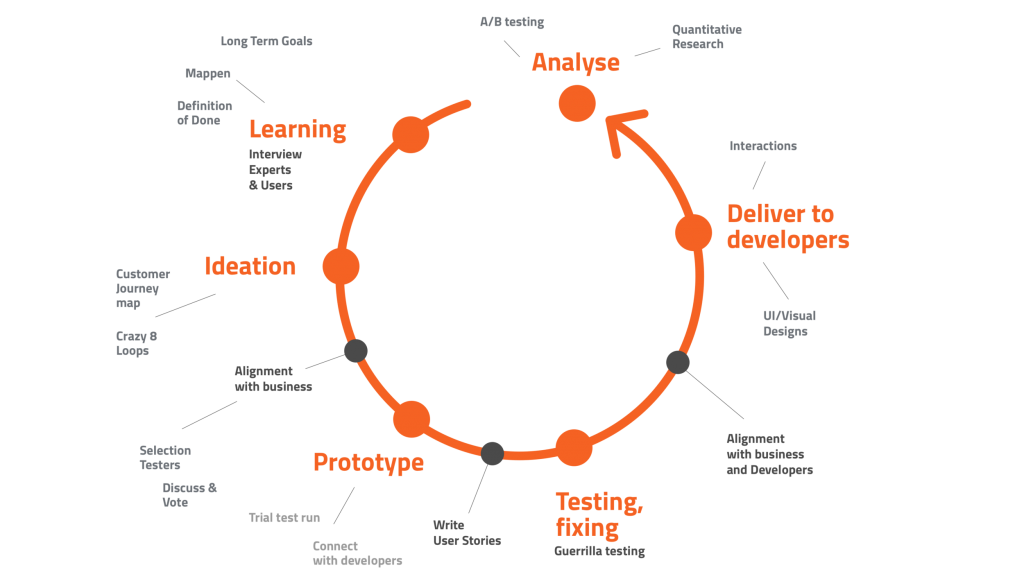
We are not designers of nice pictures. We start with listening to the business and, more importantly, listening to the users. Your users. Then we analyze.
To be effective, we need to understand your organization, branding, product or service, process, and industry—and most importantly, your existing and future customers or users. What do they think about the product or service? What are their needs, how do they use the product/service, and why? That’s why we always start with interviewing, sending surveys, and doing benchmark studies. Then, we map and analyze.
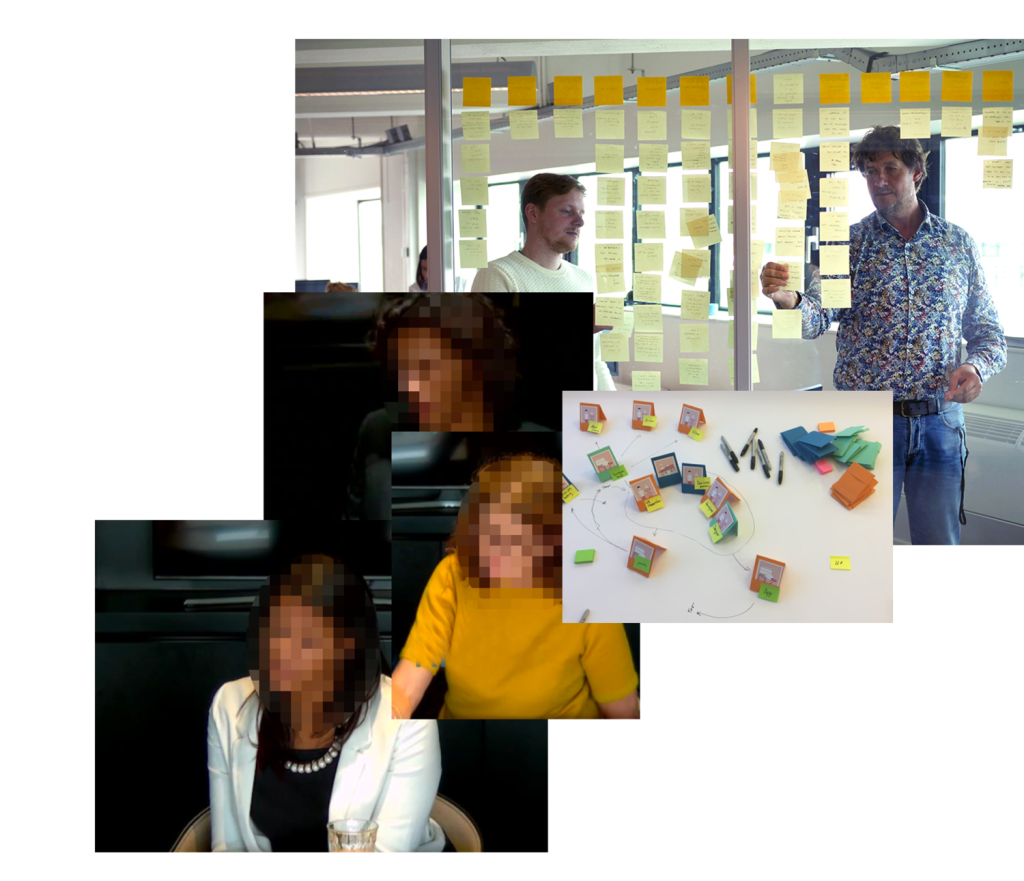
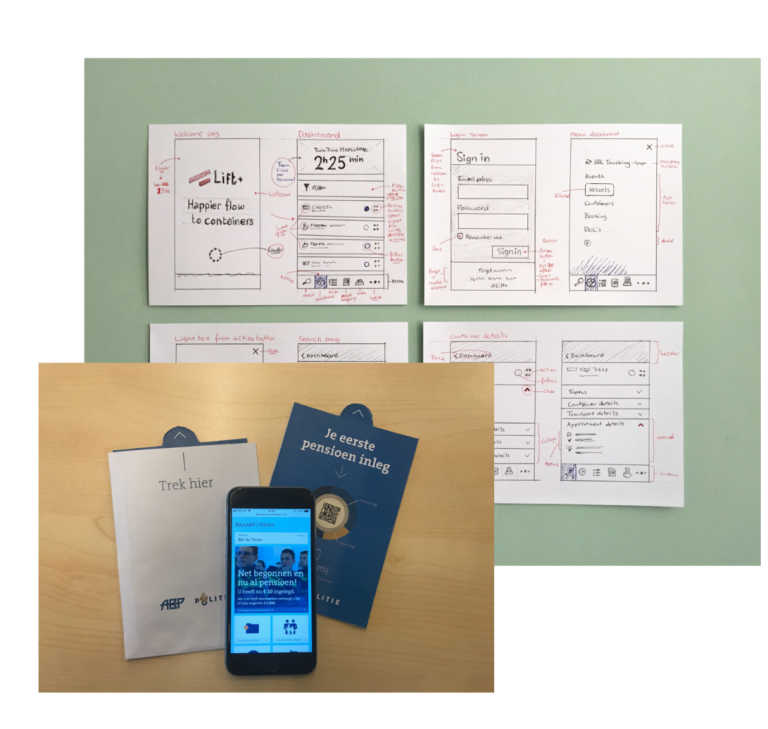
After we have insight from users and stakeholders, we start working on ideas. We do ideation mapping, Crazy Eights, storyboarding and other techniques.
We prefer to do this work closely with all stakeholders. That’s why we work inside the company with business stakeholders, users, and development teams. Different ideation techniques help us to deliver the most refreshing and coolest concepts and insights.
We make things tangible and testable fast, using feedback from users as quickly as possible to improve immediately. That’s what we call iterative designing.
We make prototypes directly after the first sketches or wireframes—low fidelity or high fidelity. Then we start usability testing with the prototypes as quickly as possible. Of course, we have to improve. And we also will fail. That’s why we do fast prototyping. This method is super-efficient and amounts to only a fraction of the research costs.

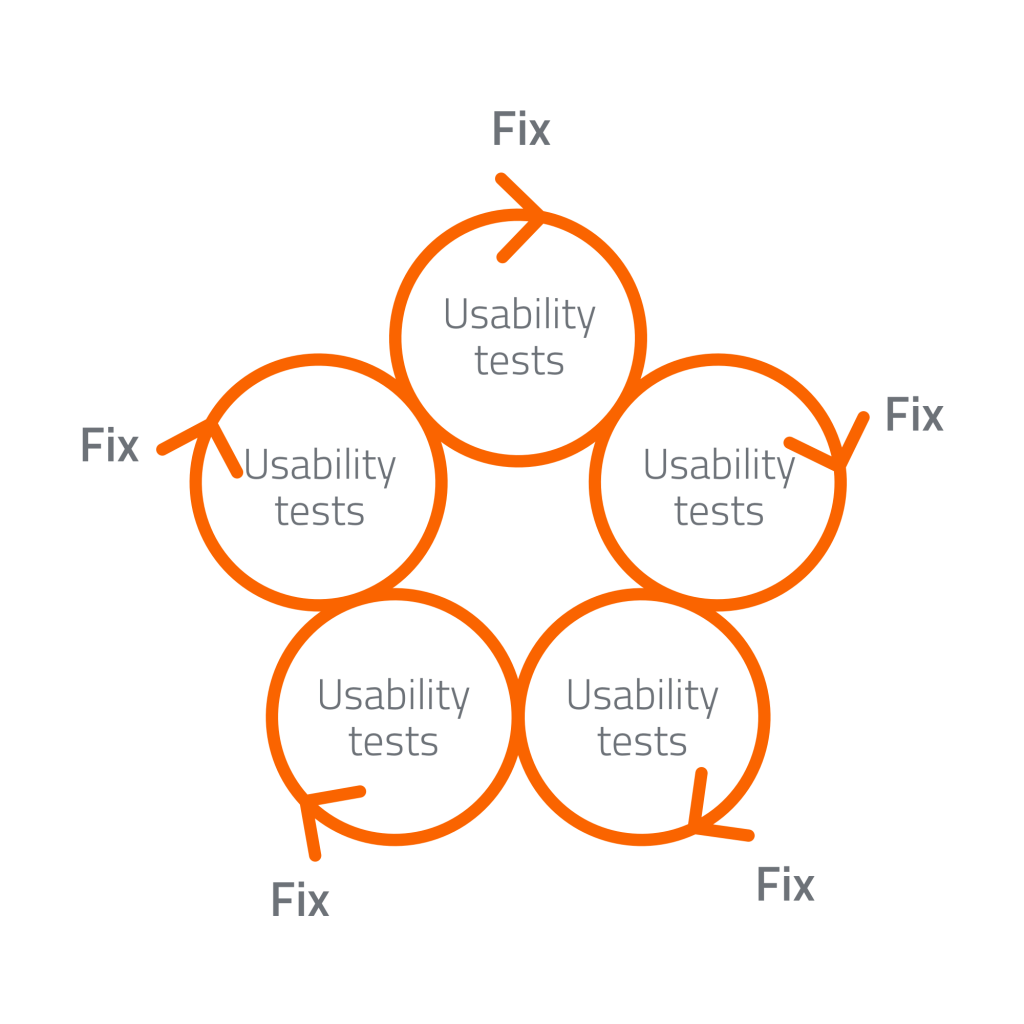
After we design a prototype, we start directly with usability testing. If something is wrong, we immediately fix the problem and test it again. And again.
We can deliver work at different levels. This varies per client or even per project within the same organization.
At ABP, we provided the stakeholders with new concepts that were analyzed as a report. On the airline project, we always exchange with our deliverables. Sometimes we provide high-level visions, and at other times, we deliver pixel-accurate designs and guide them to developers.
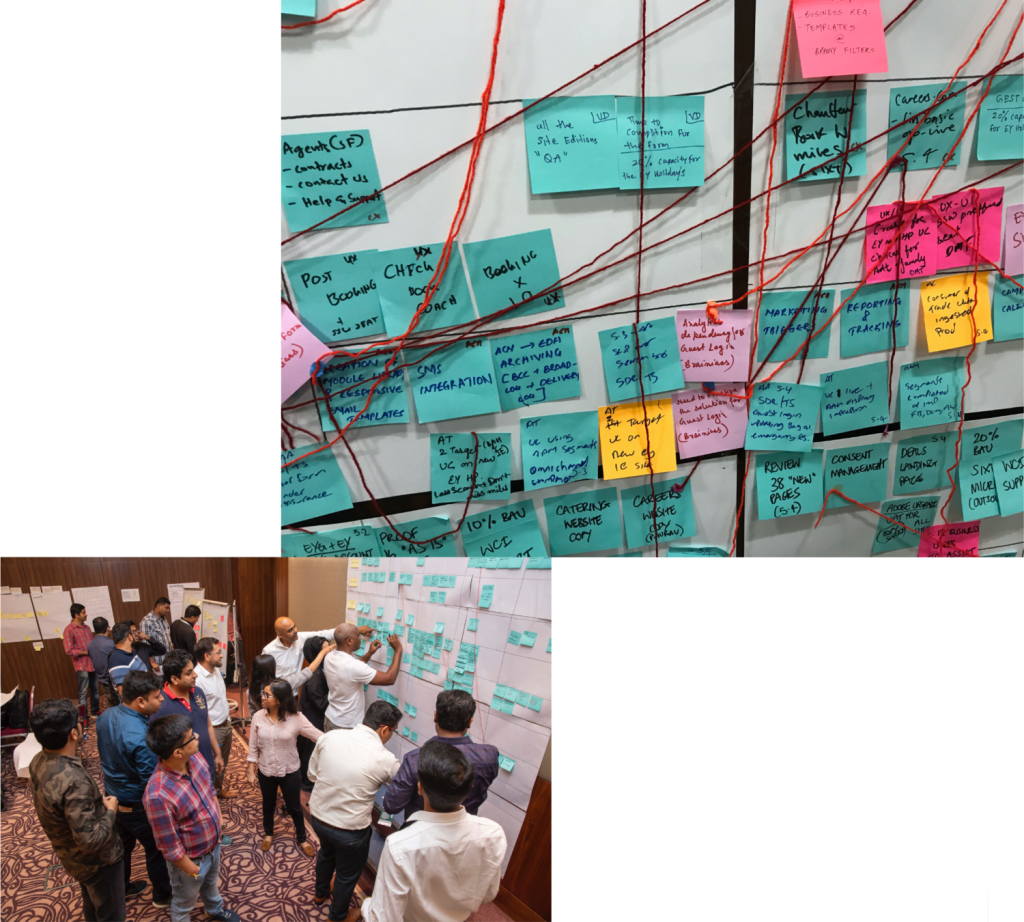
Before starting, we like to have clear list of objectives or measurement targets. Objectives are important to measure both during and at the end of projects, whether we have achieved these objectives.
We usually set these objectives together during our learning phase when we’re conducting interviews with the key stakeholders. We often also prepare a Definition of Done for users and stakeholders ourselves. It is important to clearly define a Definition of Done because otherwise, one of the two can dominate during the course of the process.
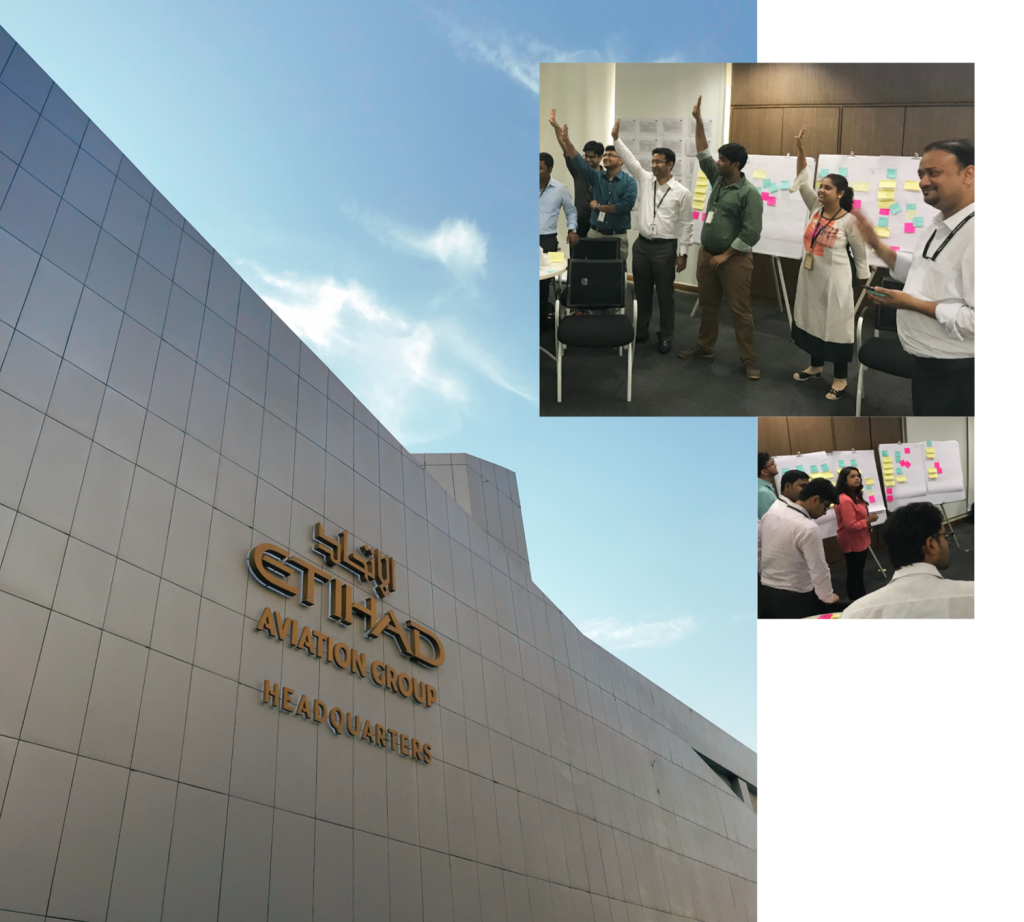
For almost 100 years ABP has been the pension fund for people working in the dutch government and education sectors. 1 out of 6 people in the Netherlands receive or will receive a pension in the future from ABP.
We worked for the national airline of the United Arab Emirates. It is one of the world’s premier airlines, well-recognized for its first-rate services, dedicated crew, and comfortable flights.
APM Terminals (part of Maersk Line) operates a Global Terminal Network of 72 operating port and terminal facilities and 140 Inland Services operations, with a presence in 69 countries on five continents.


